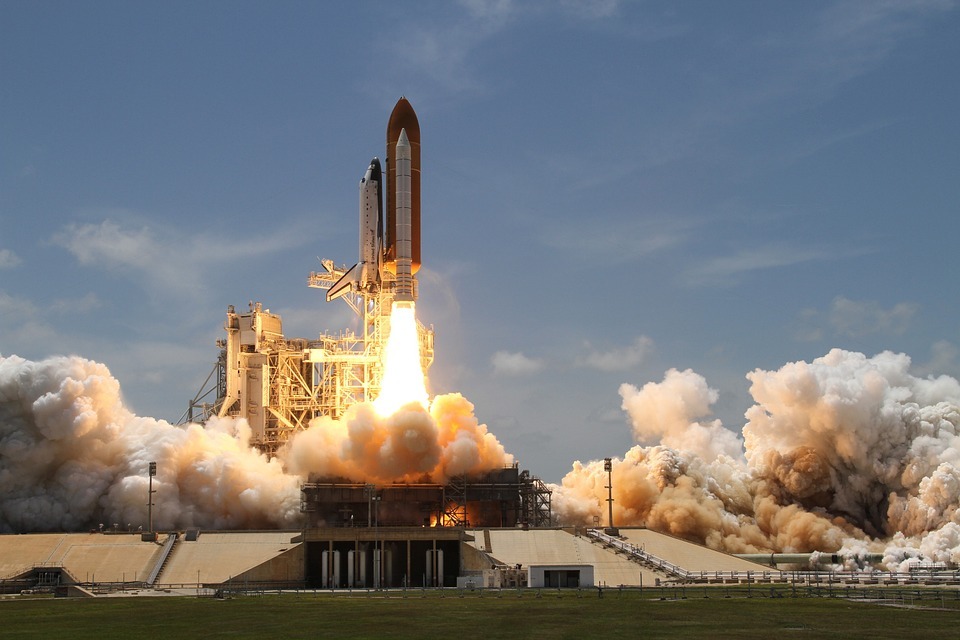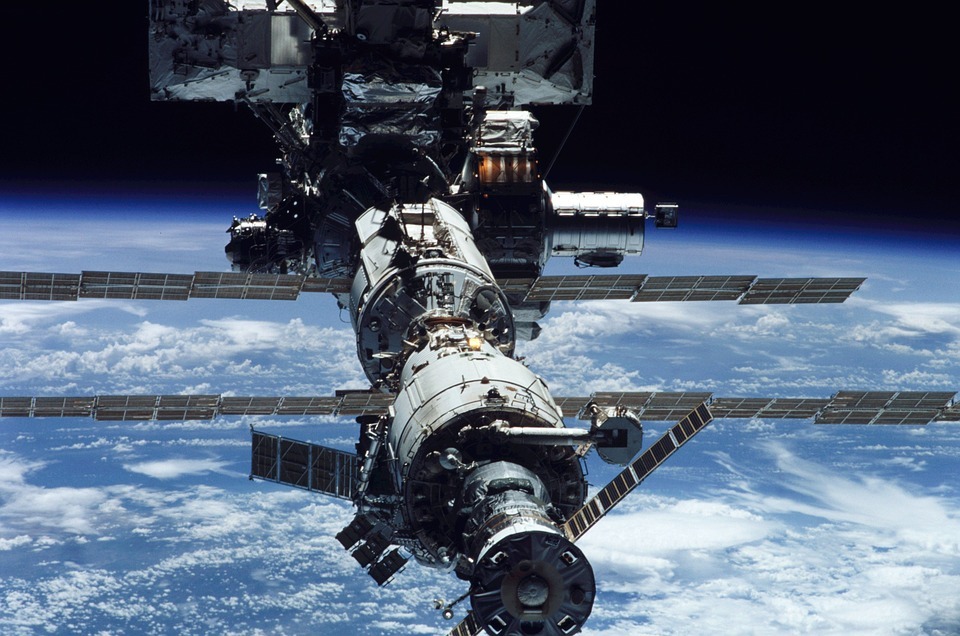The History of Space Exploration: Milestones and Achievements
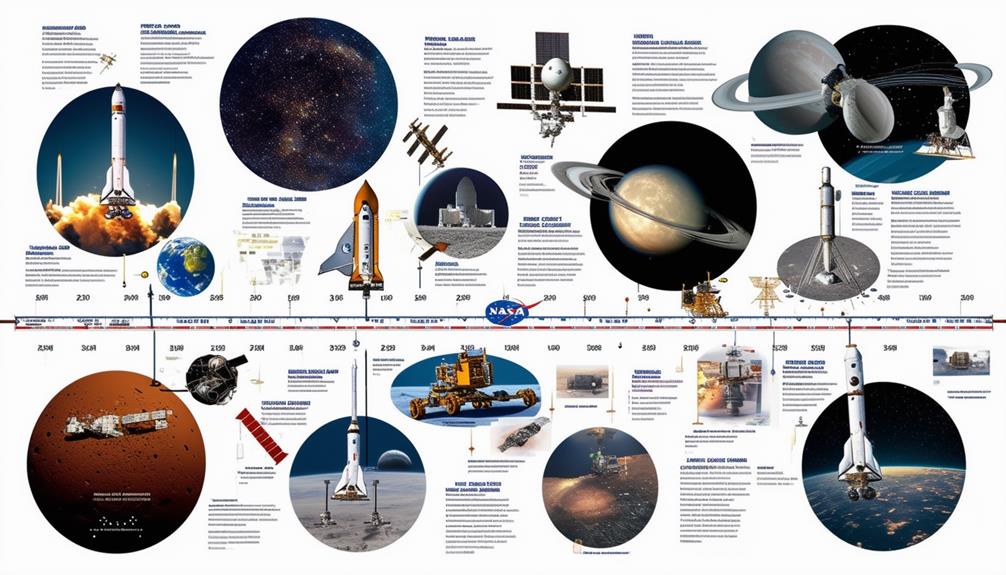
The history of space exploration is marked by groundbreaking milestones that have propelled humanity into the cosmos. From launching Sputnik 1 to stepping foot on the Moon, each achievement has expanded the boundaries of possibility.
Imagine the thrill of Yuri Gagarin's orbit or the triumph of the Apollo 11 landing. These moments were the result of intense collaboration and innovation.
Moreover, lesser-known missions and technological advancements have also played crucial roles in this fascinating journey.
Early Space Exploration Milestones
Humanity's journey into space exploration began with the launch of Sputnik 1 in 1957. This inaugural artificial Earth satellite, deployed by the Soviet Union, wasn't just a technological achievement but also the dawn of a new era. Sputnik 1's signal from orbit captured global attention and spurred the space race, driving nations to heavily invest in space technology.
In 1961, another significant milestone was achieved when Soviet cosmonaut Yuri Gagarin became the first human to orbit Earth. His 108-minute flight aboard Vostok 1 was a monumental leap, demonstrating that humans could survive and operate in space. Gagarin's historic mission inspired generations and showcased the immense potential of human space exploration.
Eight years later, in 1969, the United States made a historic advancement with the Apollo 11 mission. Neil Armstrong's first steps on the Moon were broadcast worldwide, symbolizing human ingenuity and determination. The mission's success wasn't just an American victory but a triumph for all of humanity, proving our capability to reach beyond our home planet.
These early milestones—Sputnik 1, Yuri Gagarin's orbit, and Apollo 11—laid the foundation for future space exploration endeavors.
Human Spaceflight Achievements
You're about to explore some of the most groundbreaking moments in human spaceflight. From Yuri Gagarin's historic orbit around Earth to Neil Armstrong's first steps on the Moon, these milestones have defined our journey into space.
Let's begin with the pioneers who made these remarkable achievements possible.
First Human in Space
Yuri Gagarin's historic orbit around Earth on April 12, 1961, marked the dawn of human space exploration. Aboard the Vostok 1 spacecraft, Gagarin became the first human in space. His mission lasted 108 minutes, during which he completed a single orbit of Earth before safely landing in Kazakhstan. This monumental flight demonstrated the viability of human space travel and established the Soviet Union's lead in the Space Race, inspiring future generations of astronauts.
| Date | Mission | Achievement |
|---|---|---|
| April 12, 1961 | Vostok 1 | First human in space |
| Duration | 108 minutes | Single orbit of Earth |
| Country | Soviet Union | Lead in Space Race |
| Landing | Kazakhstan | Safe return |
| Legacy | Global Impact | Inspired future astronauts |
Gagarin's expedition was not just a triumph for the Soviet Union; it was a landmark moment for humanity. His successful mission proved that humans could survive and operate in space, paving the way for more ambitious explorations. The courage and pioneering spirit displayed by Gagarin continue to resonate, as his name remains synonymous with the beginning of a new era in space exploration.
First Woman in Space
Valentina Tereshkova's groundbreaking mission on June 16, 1963, aboard Vostok 6, shattered gender barriers and demonstrated that women could excel in the harsh environment of outer space. As the first woman to fly into space, she orbited the Earth 48 times during her nearly three-day mission, proving that female astronauts possess the resilience and skills necessary for space exploration.
Tereshkova's achievement paved the way for future female astronauts in a field that had been dominated by men. Her successful mission highlighted women's capabilities and marked a significant milestone in the history of human spaceflight and gender equality within the space industry.
Valentina Tereshkova's name remains etched in history, celebrated for her courage and pioneering spirit. Her journey aboard Vostok 6 continues to inspire generations of women to pursue careers in science, technology, engineering, and mathematics (STEM) and to dream of reaching the stars.
Moon Landing Milestone
The Apollo 11 Moon landing in 1969 stands as one of humanity's greatest achievements in space exploration. When Neil Armstrong and Buzz Aldrin set foot on the lunar surface, they not only fulfilled President Kennedy's ambitious goal but also created a monumental milestone in human spaceflight. Armstrong's famous words, 'That's one small step for man, one giant leap for mankind,' echoed globally, symbolizing human ingenuity and determination. Meanwhile, Michael Collins orbited above in the command module, ensuring their safe return.
To better understand the significance of this mission, here's a quick overview:
| Key Figures | Achievement | Location |
|---|---|---|
| Neil Armstrong | First human on the Moon | Sea of Tranquility |
| Buzz Aldrin | Second human on the Moon | Sea of Tranquility |
| Michael Collins | Command module pilot | Lunar orbit |
The lunar module Eagle successfully landed in the Sea of Tranquility, and the mission returned to Earth with valuable lunar samples. The triumph of Apollo 11 not only showcased NASA's capabilities but also laid the foundation for future space exploration endeavors. The Moon landing remains a testament to what humans can achieve when they dream big and work tirelessly.
Planetary Exploration Breakthroughs
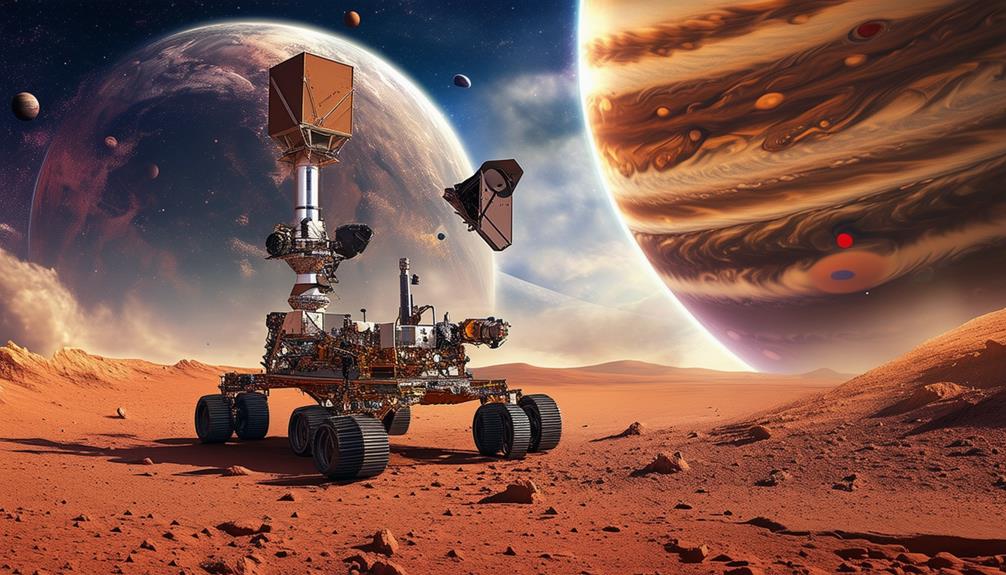
Investigate the pivotal moments in planetary exploration that revolutionized our understanding of the solar system. From Mariner 2's successful Venus flyby in 1962 to Mars 3's historic soft landing in 1971, each mission brought us closer to comprehending these distant worlds.
Additionally, consider the groundbreaking discoveries made on the outer planets.
Venus Exploration Milestones
Venus exploration has yielded groundbreaking findings, starting with Mariner 2's pivotal data collection in 1962. This mission provided the initial close-up observations of Venus, revealing its scorching surface temperatures and dense atmosphere.
Fast forward to 1970, Venera 7 became the first spacecraft to achieve a successful soft landing on Venus. It transmitted data back to Earth before being overwhelmed by the planet's harsh conditions, offering invaluable insights into its surface and atmospheric composition.
In 1975, Venera 9 and Venera 10 captured the first images of Venus's surface, showcasing its rocky terrain and thick clouds. These missions marked a significant milestone in understanding the planet's geology and environment.
Then, in 1978, the Pioneer Venus mission performed detailed observations, confirming the presence of lightning in Venus's atmosphere and further enhancing our knowledge of this enigmatic planet.
Here are three key breakthroughs in Venus exploration:
- Venera 7: First successful soft landing and data transmission from Venus.
- Venera 9: First images of Venus's surface.
- Pioneer Venus mission: Detailed atmospheric observations, including the discovery of lightning.
Together, these milestones have profoundly expanded our understanding of Venus, paving the way for future explorations.
Mars Landing Achievements
Mars landing achievements have significantly advanced our understanding of the Red Planet through a series of groundbreaking missions. The journey began in 1997 with Mars Pathfinder's Sojourner rover, the first robotic vehicle to explore Mars. Sojourner sent back a wealth of data and images, laying the groundwork for future missions.
Following Sojourner, the Spirit and Opportunity rovers were launched in 2003. These twin rovers exceeded their expected lifespans, with Opportunity operating until 2018. They traversed extensive terrains, analyzed rocks and soil, and provided crucial insights into Mars' geology, climate, and evidence of past water activity.
The Curiosity rover, launched in 2011 and landing in 2012, elevated Mars exploration to new heights. Equipped with advanced scientific instruments, Curiosity analyzed the planet's environment and searched for signs of past microbial life. Its findings have enriched our understanding of Mars' habitability and its potential to support life.
These missions set the stage for even more sophisticated explorations, such as the Perseverance rover, and have advanced the dream of human exploration of Mars. Thanks to these pioneering efforts, our knowledge of the Red Planet has expanded exponentially.
Outer Planets Discoveries
Space exploration has significantly advanced our knowledge of the outer planets through pioneering missions. The Voyager 2 spacecraft provided groundbreaking data and images of Uranus in 1986 and Neptune in 1989, offering our initial close-up views of these distant giants. These missions revealed extensive details about their unique atmospheres, magnetic fields, and moons.
The Galileo mission, launched in 1989, made remarkable discoveries around Jupiter. Notably, it revealed a subsurface ocean on Europa, raising the possibility of extraterrestrial life beneath its icy surface.
The Cassini-Huygens mission, launched in 1997, delivered a wealth of information about Saturn. It unveiled intricate details of Saturn's rings, methane lakes on Titan, and the diverse moons orbiting the planet.
Here are three significant breakthroughs from these missions:
- Voyager 2: Detailed images and data of Uranus and Neptune.
- Galileo: Discovery of Europa's subsurface ocean.
- Cassini-Huygens: Detailed observations of Saturn's rings and Titan's methane lakes.
Technological Innovations
Technological advancements have significantly transformed space exploration, enhancing mission efficiency and enabling groundbreaking discoveries.
One of the most notable innovations is the development of reusable spacecraft. The Space Shuttle Columbia, first launched in 1981, pioneered this concept by facilitating multiple missions with a single vehicle. This idea was further advanced by SpaceX's Falcon 9 rocket, which, in 2015, successfully returned its initial-stage rocket for reuse, considerably reducing costs and allowing for more frequent launches.
Another monumental leap in space technology is the Hubble Space Telescope, deployed in 1990. It has provided stunning images and invaluable data about the universe, from distant galaxies to the formation of stars. Hubble's contributions haven't only broadened our understanding of space but have also inspired countless individuals to look up and wonder about the cosmos.
These technological advancements underscore human ingenuity and the relentless pursuit of knowledge. As we continue to push the boundaries of what's possible, the future of space exploration appears brighter and more promising than ever.
Recent Space Mission Highlights
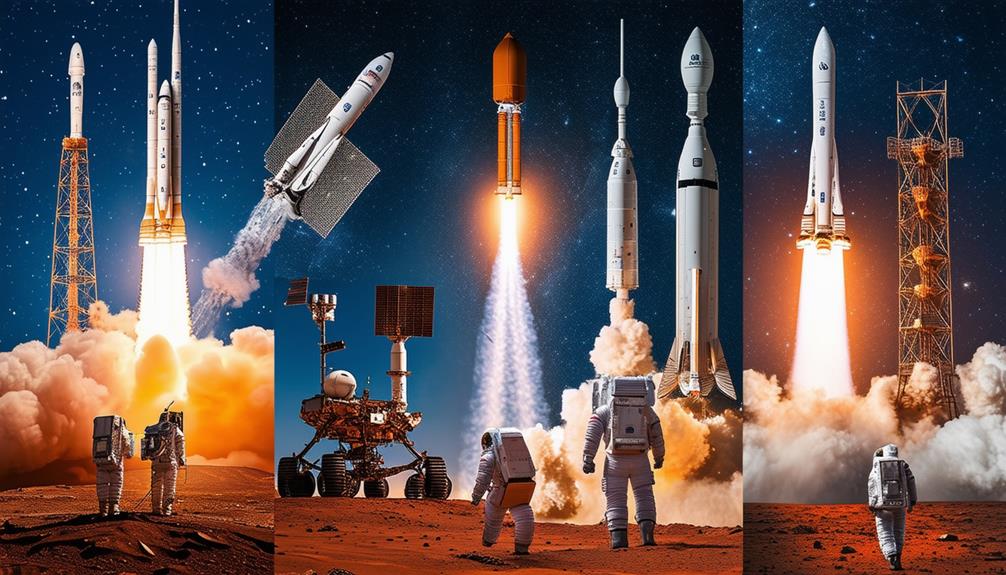
Recent space missions have delivered groundbreaking findings, expanding our understanding of the cosmos. You've probably heard of New Horizons, which amazed the world by flying past Pluto in 2015, capturing stunning images and invaluable data. But that's not all; in 2019, it continued its voyage to 2014 MU69, a Kuiper Belt object, providing insights that reshaped our knowledge of these distant celestial bodies.
Meanwhile, China's Chang'e 4 mission made history by landing on the Moon's far side in 2019. This achievement didn't just mark a technological milestone; it opened up new pathways for lunar discovery, offering fresh perspectives on the Moon's composition and geological history.
Rosetta, the European Space Agency's comet-chasing mission, was another marvel. In 2014, it successfully orbited comet 67P/Churyumov-Gerasimenko, gathering unprecedented data on the comet's structure and behavior. This mission deepened our understanding of the early solar system and the origins of water on Earth.
Here's a quick rundown of these significant missions:
- New Horizons: Investigated Pluto and 2014 MU69.
- Chang'e 4: First mission to land on the Moon's far side.
- Rosetta: Orbited and studied comet 67P/Churyumov-Gerasimenko.
These missions have truly propelled space discovery to new heights.
Space Race and Lunar Landings
The Space Race between the United States and the Soviet Union ignited a period of intense competition that led to groundbreaking advancements in space exploration. This rivalry pushed the boundaries of what was possible, beginning with Yuri Gagarin's historic orbit of Earth in 1961. Gagarin's achievement set the stage for more ambitious goals, including lunar landings.
In 1963, Valentina Tereshkova became the first woman in space, further expanding the frontiers of human spaceflight. The pinnacle of the Space Race, however, was the Apollo missions, particularly Apollo 11 in 1969. When Neil Armstrong set foot on the Moon and declared, 'That's one small step for man, one giant leap for mankind,' it marked a monumental achievement for humanity and a significant victory for the United States.
The Apollo missions showcased the power of human ingenuity and collaboration among scientists, engineers, and astronauts. These missions not only highlighted the extraordinary teamwork required but also provided invaluable data and experience, underscoring the importance of continued space exploration and its limitless potential.
Future of Space Exploration
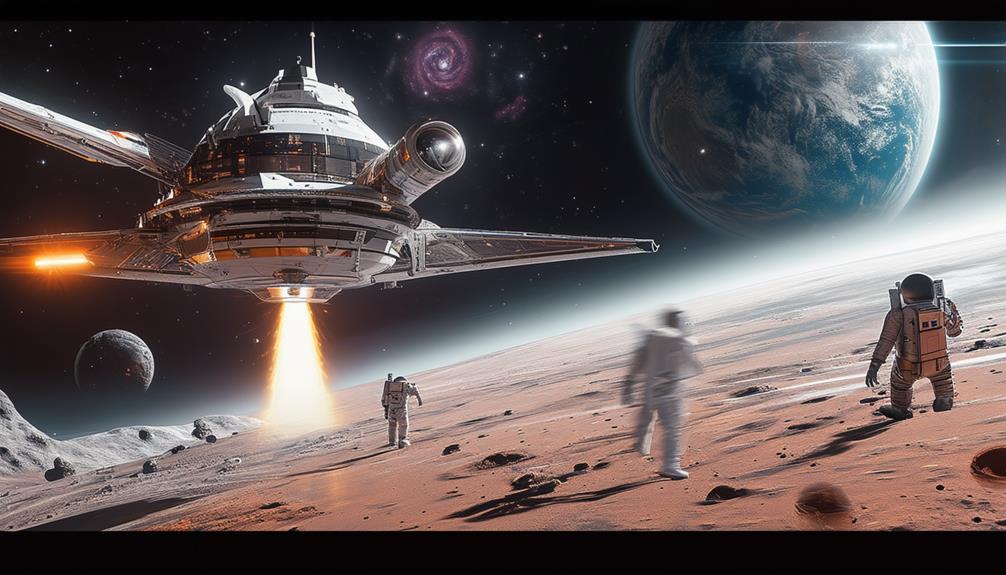
Building on the achievements of the Space Race, the future of space exploration is set to target Mars and beyond, aiming for sustained human presence and groundbreaking scientific discoveries. NASA has ambitious plans to send humans to Mars in the 2030s, marking a significant milestone in human exploration.
The focus on Mars as a key destination reflects the broader trajectory of space exploration, where orbiters, landers, and rovers continue to advance our understanding of this enigmatic planet. Missions like the Curiosity Rover and the Perseverance Rover, part of the Mars 2020 mission, play vital roles in conducting essential research. These scientific endeavors help pave the way for future manned missions by ensuring we have the knowledge and technology required for sustained human presence on Mars.
Furthermore, these missions serve as stepping stones toward even more ambitious plans, potentially reaching beyond our solar system.
Here are three key aspects of the future of space exploration:
- Human Missions to Mars: NASA's goal is to send humans to Mars by the 2030s.
- Advanced Robotic Missions: Continued deployment of orbiters, landers, and rovers to gather critical data.
- Sustained Human Presence: Long-term plans for human habitats on Mars and beyond.
The future of space exploration is undeniably exciting, promising to expand humanity's frontiers.
Conclusion
You have journeyed through the remarkable history of space exploration, witnessing key milestones such as the launch of Sputnik 1, Yuri Gagarin's historic orbit, and the Apollo 11 Moon landing. These achievements, along with advancements in planetary exploration and technological innovation, have laid the groundwork for future missions, including potential human exploration of Mars.
The relentless quest for knowledge and international collaboration continues to propel us toward new frontiers. The future of space exploration is filled with exciting possibilities, and you're part of this ongoing adventure.



